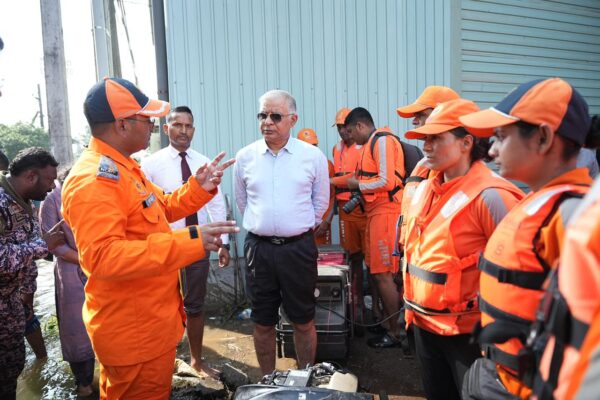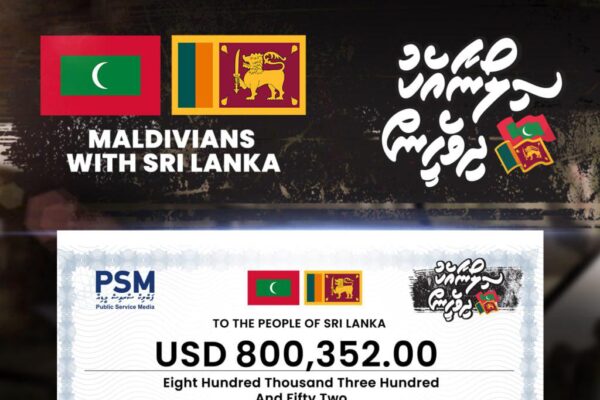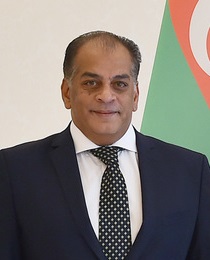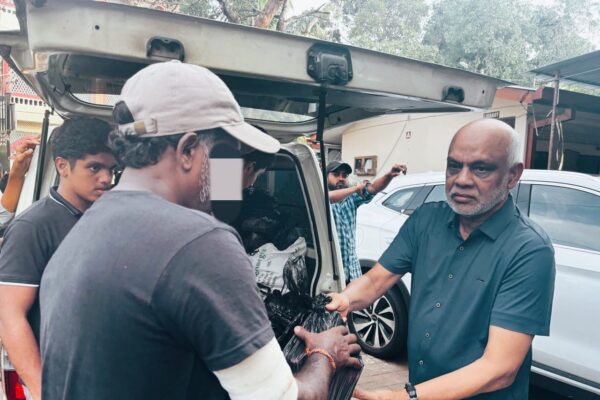By: Upali Obeyesekere
An extraordinary man who led an extraordinary life. The House of Windsor has lost its patriarch. Prince Philip, the Greece-born royal who as the husband of Queen Elizabeth II was the longest-serving consort to a British sovereign, died at 9 am on Friday, 9th April, the 99th day of the Year at the age of 99. During the coronavirus pandemic, Philip and Elizabeth had been staying at Windsor Castle, west of London. He was the longest-serving royal consort in British history, and deeply devoted to his duty in that role. Fourteen prime ministers held office while Philip was British consort — companion to the sovereign — from Winston Churchill in 1952 through Boris Johnson.
The Royal Family’s statement said: ‘It is with deep sorrow that Her Majesty the Queen announces the death of her beloved husband, His Royal Highness The Prince Philip, Duke of Edinburgh. His Royal Highness passed away peacefully this morning at Windsor Castle. Further announcements will made in due course. The Royal Family join with people around the world in mourning his loss’.
His death, announced by Buckingham Palace, came more than 3½ years after Philip formally stepped back from public life, a retreat that had been happening gradually for several years. The Queen paid a touching tribute to 99-year-old Philip as the Royal Family shared a quote about her love for him from their 50th wedding anniversary in 1997. It is said the monarch was at Prince Philip’s side when he died “peacefully” in his sleep in his private apartment at Windsor Castle.
The Duke of Edinburgh’s death came 12 days before Queen Elizabeth’s 95th birthday on April 21, two months before what would have been Philip’s 100th birthday on June 10 and on the 16th anniversary of the marriage of Prince Charles and Camilla.
Prince Philip’s Funeral on Sat. April 17th
The ceremonial royal funeral will be held at St George’s Chapel, in the grounds of Windsor Castle, at 15:00 BST on Saturday, 17 April. The event will be televised. The Queen has signed off on the plans for her beloved husband Prince Philip’s funeral. A ceremonial funeral: The Duke of Edinburgh will not have a state funeral, nor will his body lie in state for the public to pay their respects in the preceding days, the College of Arms said in a statement Friday.
The Queen, his wife of 73 years, has now agreed to the order of events for the funeral, which will take place this coming Saturday – April 17. All public elements have been cancelled, although the ceremony will be televised and there will also be a national minute of silence at 3pm. The funeral will take place at Windsor Castle in line with national coronavirus guidelines, which means it is likely all attendees will be wearing masks. Only 30 people will be allowed to attend Prince Philip’s intimate funeral on the grounds of Windsor Castle. The procession, led by the band of the Grenadier Guards, will take eight minutes. Pallbearers from the Royal Marines and other regiments will accompany the vehicle. The armed forces will line the route and members of the Royal Family, including the Prince of Wales, will walk behind the coffin. From the West Steps of the chapel, eight pallbearers will carry the coffin, draped with the duke’s standard, with a wreath and the duke’s naval cap and sword on top.
Prince Philip will be buried in Frogmore Gardens on the grounds of the Windsor Castle. The secluded 35-acres of garden are a royal family hidden gem. According to The Telegraph, “It’s where the Queen walks her corgis.” Prince Philip even installed the dining room from the royal yacht, Britannia, at Frogmore House.
The details of the Saturday, April 17 ceremony at St George’s Chapel were approved by the mourning Queen today (Apr. 10).
Buckingham Palace has confirmed their son, Prince Charles, will be among those leading the private procession. Prince Harry arrived in the U.K. on Sunday (April 11) in preparation for his grandfather’s funeral next week and is expected to participate in the ceremony on April 17, after he completes a five-day quarantine period at Frogmore House in Windsor. Prince William and Kate Middleton are expected to be at the service, along with the Queen and Philip’s other children and grandchildren.
Downing Street confirmed Prime Minister Boris Johnson will not be attending, due to the limited numbers of mourners allowed to gather in keeping with coronavirus rules.
People gather opposite Buckingham Palace as they pay tribute to Prince Philip
Long queues of people wanting to leave flowers at Buckingham Palace have formed in London today.
The public are being allowed to approach the palace gates one by one to lay their tributes, to reduce the size of the crowd amid coronavirus restrictions.
Notes have been attached to some of the tributes to the Duke of Edinburgh left outside Buckingham Palace.
One hand-written letter attached to a bouquet reads: “Dear Queen, I can’t imagine how you’re feeling right now, and I won’t pretend to know the loss that you are experiencing.”
Philip – A Prince of Greece & Denmark
Philip was born a prince of both Greece and Denmark on June 10, 1921, on the Greek island of Corfu as the youngest child and only son of Prince Andrew of Greece and Denmark and Princess Alice of Battenberg. Andrew, whose father, His family tree includes members of the royal families of Denmark, Germany, Russia, and Britain. King George I of Greece, was assassinated in 1913, was a commander in the Greek army during the 1919-1922 war with Turkey. With Greece’s defeat, Andrew and the family were exiled in 1922, settling in France.
Philip’s maternal grandfather, Prince Louis of Battenberg, renounced his German titles, adopted the surname Mountbatten, an Anglicized version of the German Battenberg, and became a British citizen. Philip’s mother was Princess Alice of Battenberg, the eldest child of Prince Louis of Battenberg and the sister of Earl Mountbatten of Burma. At age 7 in 1928, Philip was sent to school in England. He lived with his maternal grandmother, Victoria Mountbatten, and his uncle George Mountbatten.
The Duke had four older sisters; Margarita (1905-1981) who married Count Gotfried of Hohenlohe-Langenburg; Theodora (1906-1969) who married Prince Berthold of Baden; Cecile (1911-1937) who married the Hereditary Grand Duke of Hesse-Darmstadt; both she and her husband and two sons were killed in an air crash on their way to London; and Sophie (1914-2001) who was married, first to Prince Christopher of Hesse-Cassel and, after he was killed during the war, to Prince Georg-Wilhelm of Hanover. He has a total of 19 nephews and nieces.
As a teenager, Philip joined the Royal Navy and went on to serve in World War II, including participating in the battles of Cape Matapan and Crete and the invasion of Sicily. He was in Tokyo Bay for the Japanese surrender on Sept. 2, 1945 and would later receive the Greek War Cross of Valor for his services in the Navy. He will be remembered as a decorated naval officer.
Prince Philip was stationed in Ceylon (Sri Lanka) during World War II
It is a well-known fact that Prince Philip had a strong connection to Ceylon (Sri Lanka) since his teenage years. The start of the Second World War meant that Prince Philip was soon on active Naval duty. In 1940, he served in HMS Ramillies in Colombo, Ceylon, as a Midshipman, patrolling the Indian Ocean and escorting troops from Australia to the Middle East. Philip was an 18-year-old Midshipman when he joined HMS Ramillies based in Colombo on 20th February 1940. The Royal Navy ship HMS Ramillies was stationed in Colombo in 1940. Ramillies was working as an escort ship escorting Australian transport ships to the Mediterranean. Prince Philip served with HMS Ramillies from Colombo for four months. Prince Philip then transferred to HMS Kent and HMS Shropshire, County Class destroyers, on a shore station in Ceylon. While serving ashore in Ceylon, Philip was sent to Trincomalee, on the east coast, to assist a Naval team surveying the natural harbour in this picturesque town. He was back in Trincomalee on HMS Whelp in 1945.
While in Ceylon Prince Philip bought a second-hand Standard 8 car in Colombo and drove himself to Trincomalee and back, when he was assigned to assist the team surveying the Trinco Harbour, the largest natural harbour in the world. The restored silver and black Standard 9 car is reportedly Prince Philip’s first personal car. This model of car was considered expensive back in the days and only affordable by the wealthy. The registration information reveals the owner to be Prince Philip of Greece.
The late Cyril Gardiner, a former chairman of the Galle Face Hotel, later bought the car. His son Sanjeev, the present chairman, refurbished it and put it on display. Prince Philip visited Sri Lanka twice since the car was purchased and viewed it on both occasions. If ever you travel to Sri Lanka and visit the Galle Face Hotel in Colombo, you can see Prince Philip’s first car on display showcased inside the hotel. Prince Philip has explored Sri Lanka by himself during World War II.
The Royal Wedding in 1947
In 1947, the 26-year-old Philip married his third cousin, Princess Elizabeth, 21, and in doing so, renounced his Greek title to become a naturalized British subject, taking his mother’s anglicized name, Mountbatten. The Mountbatten family is therefore also represented on the standard, alongside the castle from the arms of the City of Edinburgh. He was later made Duke of Edinburgh by Elizabeth’s father, King George VI.
The wedding held out the promise that the monarchy, like the nation, would survive, and it offered that reassurance in almost fairy-tale fashion, complete with magnificent horse-drawn coaches resplendent in gold and a throng of adoring subjects lining the route between Buckingham Palace and Westminster Abbey. More, it was a heartfelt match. Elizabeth told her father, King George VI, that Philip was the only man she could ever love.
Philip occupied a peculiar place on the world stage as the husband of a queen whose powers were largely ceremonial. He was essentially a second-fiddle figurehead, accompanying her on royal visits and sometimes standing in for her. The royal matrimony at that time was not without controversy since Philip was not a native son. The Queen Mother reportedly referred to him as “the Hun.” Nevertheless, the couple married in Westminster Abbey and received more than 2,500 wedding gifts from around the world. The wedding held out the promise that the monarchy, like the nation, would survive, and it offered that reassurance in almost fairy-tale fashion, complete with magnificent horse-drawn coaches resplendent in gold and a throng of adoring subjects lining the route between Buckingham Palace and Westminster Abbey.
Philip occupied a peculiar place on the world stage as the husband of a queen whose powers were largely ceremonial. He was essentially a second-fiddle figurehead, accompanying her on royal visits and sometimes standing in for her. One year later, son and heir to the throne Charles was born, followed by Anne, Andrew, and Edward. Their son, Prince Charles, was born at Buckingham Palace in 1948, and a daughter, Princess Anne, arrived in 1950. They were later joined by Prince Andrew (1960) and Prince Edward (1964).
The Queen and Prince Philip have eight grandchildren – Peter Phillips, Zara Phillips, Prince William, Prince Harry, Princess Beatrice, Princess Eugenie, Lady Louise Windsor and James, Lord Severn. Peter and Autumn Phillips provided him with his first great-grandchild when their daughter Savannah was born in December 2010.
In 2009, Prince Philip became the longest serving consort in British history when he out-lived Queen Charlotte, the wife of King George III. The prince is the oldest living great-great-grandchild of Queen Victoria. Queen Elizabeth II, now 94, is the longest-reigning monarch alive.
The Queen and Prince Philip were married for 73 Years.
The Duke of Edinburgh, who married the future queen, brought the monarchy into the 20th century, but his occasional tactless comments hurt his image. And yet preservation — of Britain, of the throne, of centuries of tradition — had always been the mission. When this tall, handsome prince married the young crown princess, Elizabeth, on Nov. 20, 1947 — he at 26, she at 21 — a battered Britain was still recovering from World War II, the sun had all but set on its empire, and the abdication of Edward VIII over his love for Wallis Simpson, a divorced American, was still reverberating a decade later.
DEDICATION! DEVOTION! DUTY! Prince Philip was a proponent of these three attributes. For 73 years, this extraordinarily selfless man gave his life to the service of his adoptive country and to his wife, the Queen. He was the longest-serving royal consort to any sovereign in British history. In an interview in June 2011 with the BBC, the no-nonsense Philip spoke about “winding down” and reducing his workload as a member of the Royal Family. His final official public engagement came on Aug 2, 2017, when he attended a parade of Royal Marines at Buckingham Palace and met servicemen who had taken part in a charity race.
“Death is nothing else but going home to God, the bond of love will be unbroken for all eternity”. Mother Teresa
May Prince Philip Rest in Peace!















